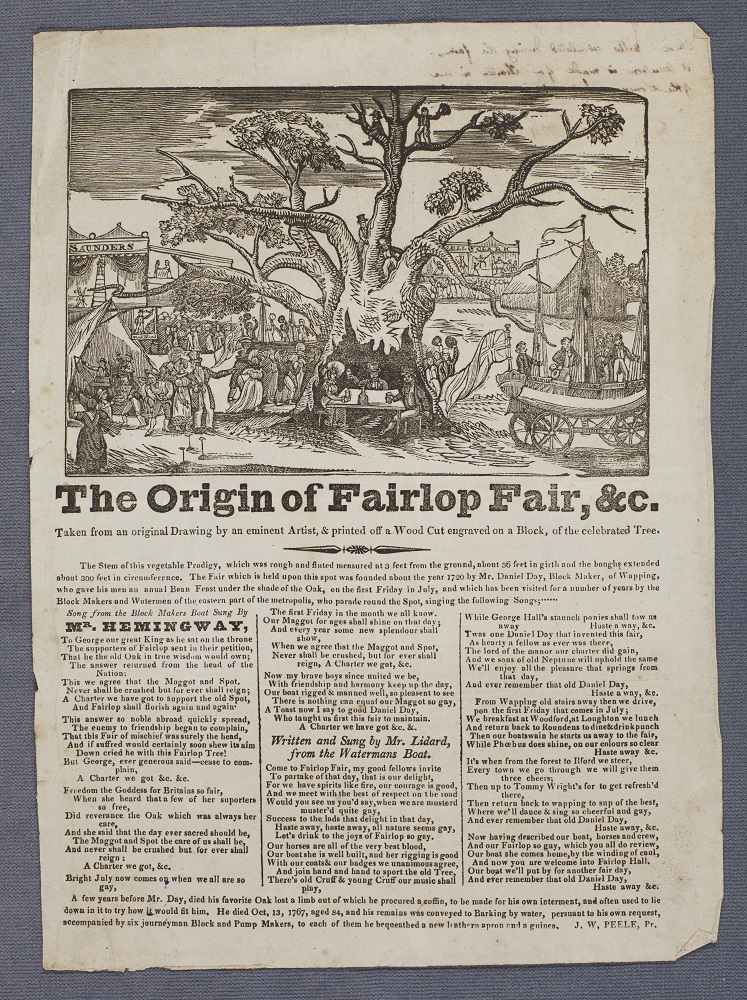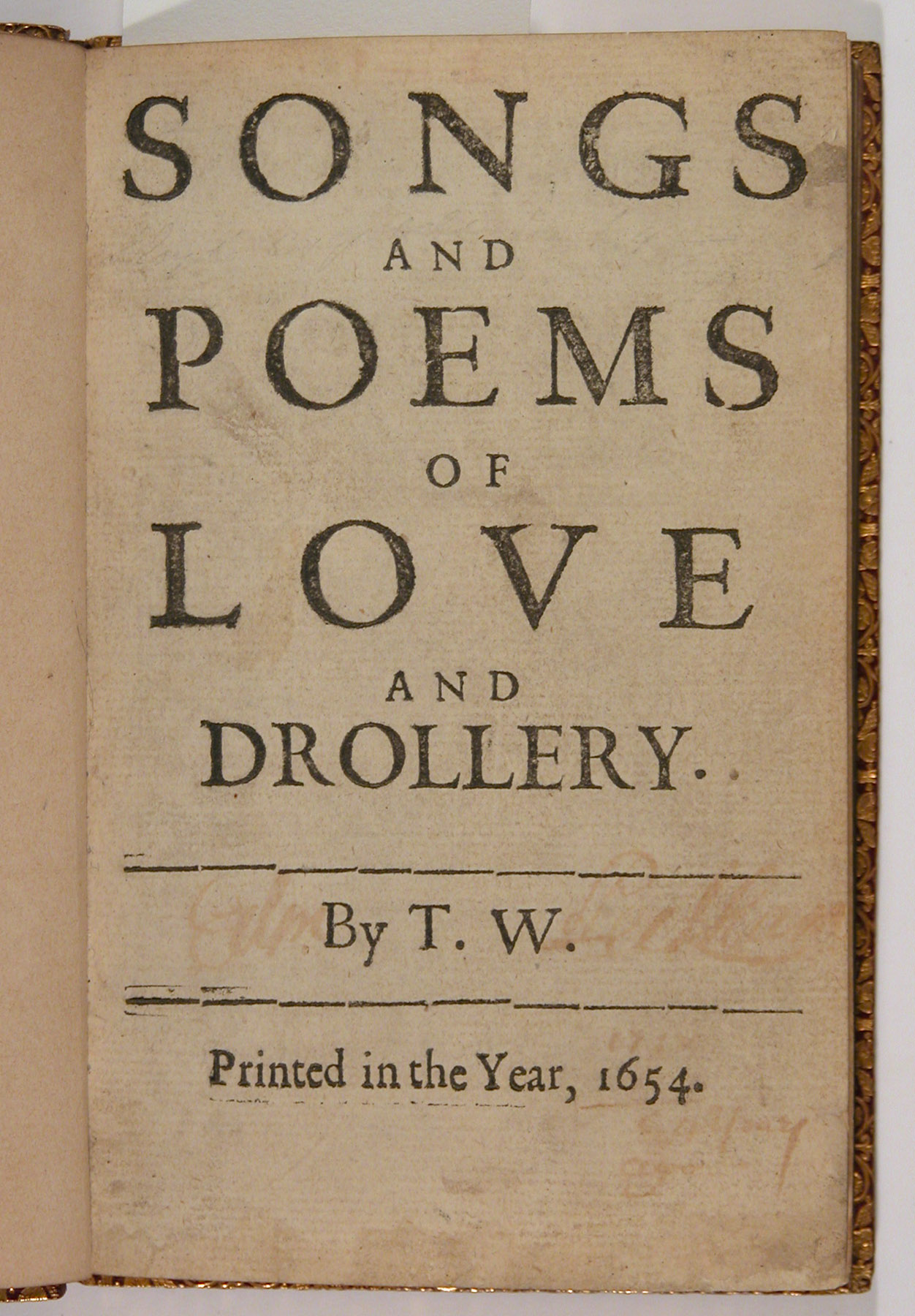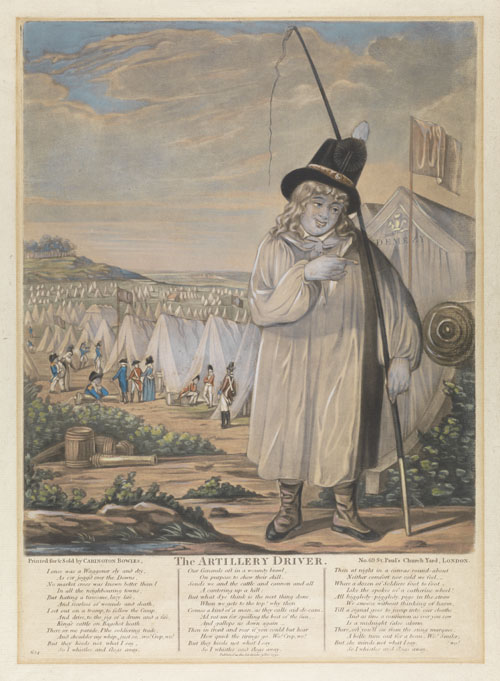
Broadside celebrating Fairlop Fair, held annually held on the first Friday in July. The broadside gives a short account of the origins of the fair, reproduces two songs sung by a Mr. Hemingway and a Mr. Lidard during the fair, and shows the festivities in an impressive woodcut which was printed from a woodblock fashioned from the celebrated Fairlop Oak. The Fairlop Oak was an impressive oak in the Hainault Forest near a lake at Fairlop Waters. In 1725 Daniel Day (d. 1767), a ship-builder, took some friends for a picnic there, repeating this for a number of summers until it gradually developed into a larger event, attended by ship-, boat- and barge-builders and their associated trades, though it was always held without a charter. By the early 19th century it was a well attended fair, known for its sometimes riotous behaviour. Day always made a point of arriving at the fair in a boat on wheels and this tradition continued. These impressive modes of transport, festooned with lights and sails, full of people in garish costumes making music and breaking into song were one of the features of the fair, and a well-known spectacle in the East End of London when they set off. By 1813 the Fairlop Oak had lost a great deal of its crown. The broadside here records its girth as being 36 feet. The tree was blown down in a gale in 1820, and its timber was used for a variety of celebratory furniture but also for the block from which the present woodcut was carved.
- Title: The origin of Fairlop Fair, &c. : taken from an original drawing by an eminent artist & printed off a wood cut engraved on a block of the celebrated tree.
- Publication: [Ilford, England] : J.W. Peele, [1824]
File 74 824 P374
Acquired April 2017








